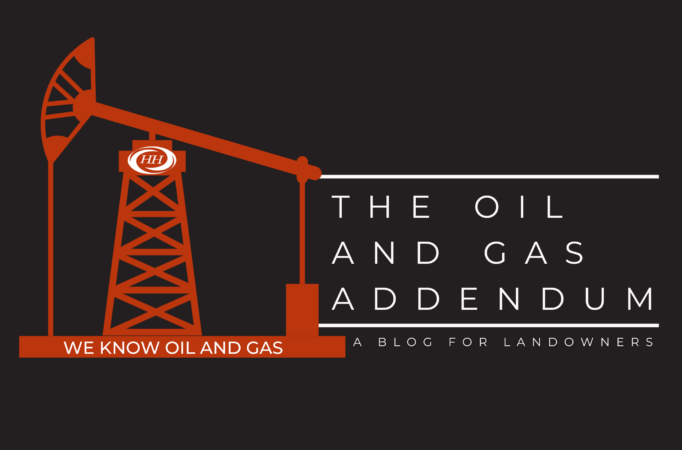The Oil and Gas Addendum
New Royalty Bill Hb 1708 Will Not Help Pennsylvania Landowners
Throughout Pennsylvania, landowners are continuing to experience frustration and anger when they open their royalty statements. The practice of deducting postproduction costs from the gas royalty has become widespread as more and more gas drillers elect to pass these costs on to the landowner. Although the landowner negotiated an 18 percent royalty in his lease, the actual net payment may be closer to 10 percent or even lower. The royalty payment is reduced by operational costs, known as postproduction costs that the driller incurs as the gas is moved down-stream. These costs can be significant and landowners across Pennsylvania are questioning the fairness and legality of this practice, which is subject to abuse.
The outrage and anger does not stop there. Many landowners signed leases with the statutory minimum royalty of 12.5 percent. This minimum royalty is guaranteed by Pennsylvania’s Guaranteed Minimum Royalty Act (GMRA). Pursuant to the GMRA, an oil and gas lease is invalid unless it guarantees the landowner a production royalty of at least 12.5 percent. At the time they signed the lease, these landowners were told by the landman working for the gas driller that their royalty would never be less than this statutory minimum. However, because of the practice of deducting postproduction costs, the net royalty received by these same landowners is actually closer to 7.5 percent or less. To these frustrated and disillusioned landowners, 12.5 percent apparently does not really mean 12.5 percent. As a result, these landowners believe that the GMRA has become a hollow and impotent statute that guarantees nothing.
On February 17, 2017, Rep. Garth Everett (R-Lycoming County) introduced HB 557. The bill seeks to put teeth back in the GMRA by prohibiting a driller from taking deductions that reduce the landowner’s net royalty below 12.5 percent. It is important to emphasize that HB 557 does not ban or prohibit the practice of deducting postproduction costs. The bill simply says that the deductions cannot reduce the net royalty below 12.5 percent. In other words, HB 557 simply brings some common sense and consistency to the original GMRA by clarifying that “12.5 percent” really means “12.5 percent.”
Recently, an alternative royalty bill was introduced by Rep. Jason Ortitay (R-Allegheny County) known as HB 1708. In his Co-Sponsorship Memorandum, Rep. Ortitay calls the bill “[T]he Landowner Protection Act” – nothing can be further from the truth. HB 1708 does nothing, I repeat, does nothing to halt, stop or abate the practice of taking deductions which results in a net royalty below 12.5 percent. In fact, HB 1708 would legitimize and actually encourage such practice. Under this bill, drillers can and will take deductions that result in net royalties of 10 percent or 8.5 percent or even less. The bill is nothing more than a Trojan Horse which will simply preserve the unacceptable status quo.
First and foremost, unlike HB 557, HB 1708 does not contain an express guarantee that the net royalty will be at least 12.5 percent. Conspicuously absent from HB 1708 is any language which prohibits a driller from taking deductions which will result in a net royalty below 12.5 percent. The absence of such language in a purported “landowner’s” bill is alarming and strongly suggests that the true purpose of the bill has nothing to do with protecting landowners or improving the GMRA.
The narrow and misguided focus of HB 1708 is further illuminated by a close examination of Sections 1.3(a) and 1.3(b) of the proposed bill. Section 1.3(a) amends the GMRA by stating that no lease will be “valid” unless it guarantees “at least one-eight royalty of the value at the wellhead.” The bill deliberately designates the wellhead as the royalty valuation point in all leases. This is problematic. Shale gas is rarely sold at the wellhead. Almost all modern gas sales occur miles downstream from the wellhead. Logic and fairness dictates that the royalty should be valued at this downstream point-of-sale. As such, it is unclear and rather suspicious why Rep. Ortitay wants to use this artificial and fictional valuation point. In short, there is no reason for this language unless the bill itself is designed to encourage and promote the practice of deducting postproduction costs.
The dubious nature of Section 1.3(a) is compounded when it is read in conjunction with Section 1.3(b). This section provides as follows:
(b) Value at the wellhead.-For the purpose of subsection (a), the value at the wellhead shall be determined as prescribed under subsection (d) by deducting the postproduction costs which were actually and reasonably incurred from the proceeds received by the lessee at the point of sale.
The effect of this language is significant. Here is what HB 1708 is really saying: drillers can deduct any and all postproduction costs between the wellhead and the point-of-sale and the lessor is only entitled to a minimum royalty of 12.5 percent on the net value after all the deductions are taken. As long as the driller pays the lessor 12.5 percent on the net value after the costs are deducted, there is no violation of the GMRA. In other words, under HB 1708 the lessor is no longer guaranteed a minimum royalty of 12.5 percent of the actual hydrocarbon production. Rather, the minimum royalty obligation will be satisfied if the driller simply pays 12.5 percent on whatever amount is “left over” after the postproduction costs have been deducted. This will effectively render the GMRA meaningless.
Perhaps the fallacy of HB 1708 is best illustrated by a simple example. Assume a leasehold has a single horizontal well which produces $1,000.00 in monthly revenue. The lease contains a royalty of 12.5 percent. Assume further that the purported postproduction costs attributed to this production are $100.00. Under HB 1708, the lessor’s royalty of 12.5 percent is calculated on $900.00 (i.e. the value after costs are deducted), resulting in a net royalty of $112.50.
The result under HB 557 is much different. HB 557 states that “[N]o deduction or allocation of costs, expenses or other adjustments may result in a royalty less than the one-eighth” as provided by the GMRA. As a result of this language, the lessor in our example will receive $125.00 on that same production. Although the royalty rate in both examples is the same, the language in HB 1708 only guarantees one thing: the landowner’s royalty will be less than 12.5 percent because the royalty is calculated after deductions are taken. As such, it is rather disingenuous for Rep. Ortitay to call HB 1708 a “landowner protection act.” The only thing “protected” by HB 1708 is the controversial and unfair practice of paying a royalty below the state minimum. Regrettably, HB 1708 is simply bad policy and is bad for Pennsylvania landowners.
About Us
Oil and gas development can present unique and complex issues that can be intimidating and challenging. At Houston Harbaugh, P.C., our oil and gas practice is dedicated to protecting the interests of landowners and royalty owners. From new lease negotiations to title disputes to royalty litigation, we can help. Whether you have two acres in Washington County or 5,000 acres in Lycoming County, our dedication and commitment remains the same.
We Represent Landowners in All Aspects of Oil and Gas Law
The oil and gas attorneys at Houston Harbaugh have broad experience in a wide array of oil and gas matters, and they have made it their mission to protect and preserve the landowner’s interests in matters that include:
- New lease negotiations
- Pipeline right-of-way negotiations
- Surface access agreements
- Royalty audits
- Tax and estate planning
- Lease expiration claims
- Curative title litigation
- Water contamination claims

Robert Burnett - Practice Chair
Robert’s practice is exclusively devoted to the representation of landowners and royalty owners in oil and gas matters. Robert is the Chair of the Houston Harbaugh’s Oil & Gas Practice Group and represents landowners and royalty owners in a wide array of oil and gas matters throughout the Commonwealth of Pennsylvania. Robert assists landowners and royalty owners in the negotiation of new oil and gas leases as well as modifications to existing leases. Robert also negotiates surface use agreements and pipeline right-of-way agreements on behalf of landowners. Robert also advises and counsels clients on complex lease development and expiration issues, including the impact and effect of delay rental and shut-in clauses, as well as the implied covenants to develop and market oil and gas. Robert also represents landowners and royalty owners in disputes arising out of the calculation of production royalties and the deduction of post-production costs. Robert also assists landowners with oil and gas title issues and develops strategies to resolve and cure such title deficiencies. Robert also advises clients on the interplay between oil and gas leases and solar leases and assists clients throughout Pennsylvania in negotiating solar leases.

Brendan A. O'Donnell
Brendan O’Donnell is a highly qualified and experienced attorney in the Oil and Gas Law practice. He also practices in our Environmental and Energy Practice. Brendan represents landowners and royalty owners in a wide variety of matters, including litigation and trial work, and in the preparation and negotiation of:
- Leases
- Pipeline right of way agreements
- Surface use agreements
- Oil, gas and mineral conveyances

